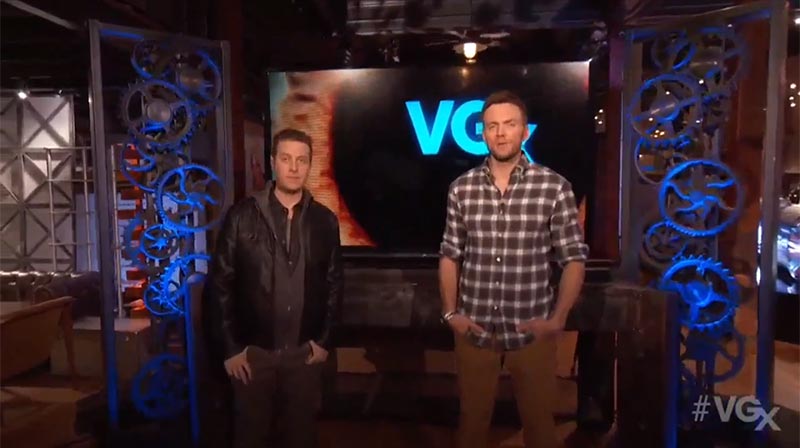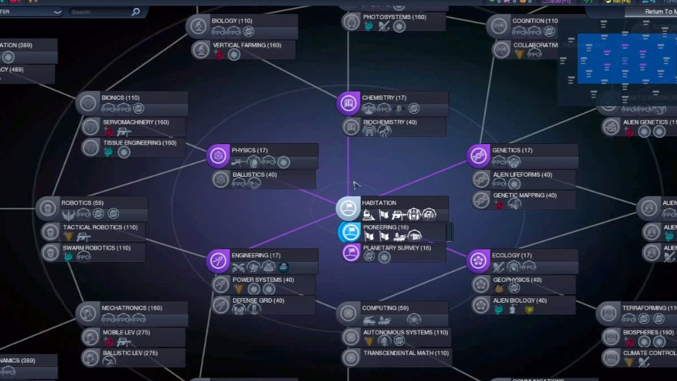Why are we so obsessed with zombies? Some posit it’s related to our American memory of the Wild West, our yearning for an outlaw culture in which might makes right. Others say it’s because we’re disenfranchised, dissatisfied, disempowered, and crave… well, an outlaw culture in which might makes right. There are as many explanations as there are takes on the walking dead, but most of them circle back around to our not-so-hidden desire to become ultra badasses. But (luckily), the dead haven’t risen, so those of us who really crave a chance to put together the ultimate survival team look for that experience in games. What good is it, though , if it doesn’t feel real?
In order to discuss realism in zombie games, however, we have to define that realism. The post-apocalyptic scenario itself is inherently something created, since no one’s experienced it. So how do I define “realism” in a zombie game? Internal logic, consistency, consequences, and, most of all, a story that deals with the survivor struggle. How do we hang on in the face of moaning, shuffling death? How do we hunt, gather, defend, and learn?
Games allow us to test this experience, to see how we might handle the scenario. But that comes with its own limitations. You can only work with the tools the developers see fit to give you. Your digital avatar can’t utilize a convenient rock as a weapon in a dangerous situation unless that rock was programmed as a movable object. So until or unless games become limitless destructible environments with every possible action anticipated and accounted for (oh, heaven), we have to accept that there are some things we can accomplish, and some things we can’t, and operate within that level of “realism.”
State of Decay, Undead Labs’ loudly trumpeted inaugural effort takes a stab at that realism, while riffing on a lot of things that have already been done in zombie games. I don’t think anyone will declare State of Decay new or innovative; it’s Grand Theft Zombie, a journey through a relatively static world controlled by a shallow narrative. The game has a lot going for it, don’t get me wrong, but it’s limited in scope. There are a lot of little perks (tiny realistic facial expressions!), but a lot of little flaws, too.
And yet, State of Decay may be one of the most realistic zombie game experiences available. The player is thrown right into the action from the opening screen and it never stops from there. Looking through the menus doesn’t pause the game, and certain features and missions will disappear with the passage of enough game time, so you’re always “on,” with nary a chance for a breather. Worse still, State of Decay saves your basic progress, but there are no retries here. If you fail at something, you’ve simply failed. That’s it. You die? That character is gone. Want to try to get them back? Start over from the beginning. This is old school, one playthrough, and you don’t even get extra lives.
Here, the player is tasked constantly with choices. What will you gather? What’s the most efficient route? Will you go get the supplies you need to build up your base, or go save the friend who’s gone missing? If someone’s sick, what do you do? How do you handle the redneck thugs menacing the other pockets of survivors?
Since the game never stops unless actually paused, you’re always making these choices, and it’s exhausting. You’re always needed somewhere, and nothing at home is safe, no matter how well you’ve built your defenses. Turning things off isn’t an escape, either; you might boot the game up only to find that three of your teammates have gone missing, with nary a sign of them on the map.
If the zombie apocalypse went down tomorrow, I suspect that, in moments of levity, we might compare the day-to-day to State of Decay.
But it took some time for me to realize all of this. I was simply playing happily, satisfied that I’d finally found one of the more immersive, reactive experiences I’d been looking for. I was on my third attempt, having tossed a couple of false starts, and clipping along with high morale and a swanky new base. There was a lot to do, but things were solid. I had my three main avatars I actually used to play, and a fair team of background folks. Life in Trumbull County was… well, not good. But it was acceptable, considering the undead hordes parading through the streets.
So there I was, preparing to set out on a mission. I’d just dropped off some supplies and checked my status, but when I opened the menu again to switch characters, something was different. One photo was grayed out and captioned DEAD: Maya, one of my three mains. “No!” I said to my husband, who was sitting beside me. “Why is Maya dead?”
In State of Decay, people come and go from your base on their own, activating missions, and you also have the option of calling people to you for help. I’d put in a call for someone to come retrieve a box of supplies I’d found. Maya must have been the one to answer the call, and on the way back, she’d been jumped. I found her body right outside our home base, not fifteen feet from the gate. She’d been torn in half. The supplies were in a rucksack beside her. She’d done that, at least. She’d brought us what we needed.
My husband and I bemoaned this turn of events for some time. “It’s so stupid that no one shot that feral who jumped on her,” he said. “She was right there by the watchtower.” We talked about game mechanics, about survivors who would call for help when they were just across the street, or who would ask for assistance when they were in relative safe zones. “They need to fix that,” he said, “they” being Undead Labs, the team behind State of Decay. And, stung over the loss of a character I’d built up from the beginning, I agreed. Stupid game. Everything was stupid. I finished the mission I was on and turned the Xbox off.
“I can’t believe it,” I had said to my husband. “Who am I going to depend on now? Karen the drunk? Emilio the ever-angry?” Maya had been solid not just because of her stats, but because of her attitude. She didn’t have much of a story – none of them do, beyond revealing snippets of dialogue – but she was strong and dependable. She was good with the others. She was one of the three pillars of my team. The rest? Not up to snuff. These were not the kind of people I could rely on in an apocalypse.
What the Undead Labs team has accomplished is deceptively simple: without throwing in a heavy storyline or a lot of cutscenes, they built a living, reactive world, a world so dangerous that sometimes your friends can just die, and there’s nothing you can do about it.
It didn’t end with Maya, either—when I booted State of Decay up again, I was hit with a message about Emilio. He was sick. He might not make it… and I was tasked with making sure he didn’t die (and turn) inside the base.
I’d hated Emilio. He was always angry, which necessitated a special quest to chill him out. But I wasn’t ready to take him out back and shoot him. But what if he died and turned inside the base? I’d have to make a choice. I went on a supply run to think things over.
Could I ignore it? Poor Emilio didn’t have the black fever, the zombie disease. He was only sick (“gravely ill,” read the in-game journal notes), so sick he couldn’t stand up straight. But it was a risk. I’d read of another player’s experience with someone who died in the base. It wasn’t pretty. Emilio would have to go.
When I hauled my ruck back to the base, I decided to try a third option—I took Emilio aside and asked him to leave, for everyone’s sake. “Fuck that,” he responded, and stormed off. With a heavy heart, I followed and walked Emilio out to the industrial park across the road, where I shot him in the head. But the experience haunted me as I drove through town for my next mission. What if he’d gotten better? What if it had been for nothing?
So far, State of Decay has challenged me to think in a way few games do. You can’t go back and try again to see what happens, not without restarting your entire playthrough. There are no saves, no second chances. You just have to push forward and hope you’ve made the right decisions.
Not everyone is as satisfied with the game as I am. “It takes too long to reload the guns,” posters complain on Undead Labs’ forums. “People keep going missing. They need help too much.” “Too many zombies are spawning.” “Why isn’t there a difficulty setting? Give us an easy mode!”
The team at Undead Labs, I suspect, skews closer to my desires. The recent update fixed the early, essential bugs. It also seems to have turned up the enemy spawn rate. Oh, the dev team seemed to be asking, is this too hard for you? Too many zombies in your zombie game? Have some more, friends, and remember: surviving the apocalypse should never be easy.





6 thoughts on “Chasing realism in Undead Labs’ State of Decay”
It’s a pretty fun zombie survival game. I like the managing your home base. Due to the permadeath it keeps me always cautious and second guessing my choices, like it should. lol So far I’ve only lost one of my characters, due to my own stupidity, took on to many zombies at once.
I am typically pretty cautious when I play, but this game has me totally paranoid.
As an aside, there may be a simple explanation for why we’re seeing so many zombie-shooter games being made lately: zombies aren’t people.
In other words, we’re seeing so many of these not primarily because zombies are popular (though that might be a lower-priority justification), but because shooting human beings in a computer game is politically touchy these days. It’s just safer to go with robots, aliens, zombies or otherwise mutated former humans, or — in a pinch — Nazis or Confederate-era racists.
I’m sure this isn’t the main reason for all zombie-shooters. Some probably do go after zombies as a flavor of the month target. But my suspicion is pretty strong that avoiding bad PR explains why there are so many of them currently.
To the actual point about emergent mechanics enabling more intellectually and emotionally engaging gameplay than static encounters pre-scripted by some developer somewhere: yes.
I personally don’t enjoy playing “game over” designs; to me that’s stressful, not fun. But I do see how it works for apocalyptic horror.
Having said that, I’d really like to see the basic idea here used in other games that are slightly less stressful than lurking death that can kill anyone, anytime. A game world built on dynamically interacting systems will be one that’s more worth exploring for more hours than a scripted, linear, “play it once and you’ve seen everything worth seeing” game. (I can’t get past the interface, but a lot of people say that Dwarf Fortress is such s game. Crazy stuff happens, and awesome stories emerge.)
What’s sad is that this model was where gaming appeared to be headed in the ’90s on the PC. Studios like Looking Glass were making “dungeon simulators” like Ultima Underworld and multi-solution game environments like System Shock and Thief. Since then it feels like dynamism has gone backwards. You can see it all too well in the BioShocks — with each iteration they offer less player agency, less active worlds, than the original System Shock… released in 1994, nearly 20 years ago now. BioShock: Infinite designer Tynan Sylvester has even written to try to dismiss what he called the “simulation dream.”
This blog post does a great job of showing the alternative to non-simulationist games that, for all their glitz, are little more than interactive cutscenes. Games like State of Decay are one answer to the current belief that absolute developer control over every aspect of the player experience is required. It demonstrates how designing for emergent effects allows satisfying content to surprise and inspire and terrify and delight us.
For my money, this is the real future of computer games. They can and should be something different/more than just interactive novels.
I really like that idea — that it’s more acceptable to blow the hell out of zombies than it is people. Makes sense to me. In fact, I agree with everything you’re saying here. I definitely find I often want more agency in games. I want the option that isn’t listed, the logical option that’s often missing. If I want to read a book, I read. If I want to watch a movie, I watch a movie. Gaming is, and has been, somewhat in flux, still trying to figure out just what kind of experience to offer, and the result is often muddled.